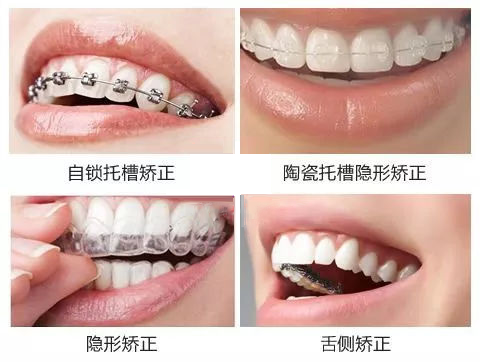Orthodontics

Orthodontics is to adjust malocclusion and deformity. Orthodontics mainly studies the etiological mechanism, diagnosis, analysis, prevention and treatment of malocclusion and deformity. Orthodontics can achieve the effect of beautiful teeth.
Orthodontics mainly adjusts the coordination between facial bones, teeth and maxillofacial nerves and muscles through various orthodontic devices, that is, to adjust the abnormal relationship between maxilla and mandible, between upper and lower teeth, between teeth and jaw and between the nerves and muscles connecting them. Its ultimate purpose is to achieve the balance, stability and beauty of the oral and maxillofacial system.
The best time for orthodontics depends on different age:
1. Deciduous tooth stage (3 ~ 5 years old).
The purpose of correction is mainly to promote the normal development of children's maxillofacial region. During this period, it is mainly aimed at malocclusion (malocclusion) deformities that hinder the normal development of maxillofacial region, such as deciduous tooth inversion (occlusion) (i.e. ground wrapping), mandibular protrusion, posterior tooth inversion (occlusion), etc., and timely correct the bad habits that affect the normal function of oral cavity, such as tongue extension and lip biting, so as to prevent the further occurrence of malocclusion (occlusion).
2. Mixed dentition stage (girls: 8-10 years old, boys: 9-12 years old).
Local dentition irregularity at this time generally does not need to be corrected in a hurry. However, for bad habits such as lip biting, tongue extension and mandibular protrusion, or abnormal facial shape, anterior teeth reverse jaw, mandibular functional retraction and the relationship between maxilla and mandible, it is often necessary to go to the hospital for orthodontic professional examination in time to determine whether it is dental, functional or skeletal malocclusion, so as to clarify the treatment plan.
3. Permanent dentition (girls: 11-14 ~ years old, boys: 13-15 ~ years old).
Permanent dentition begins to form around the age of 12. At this time, once there is an uneven dentition, it will not disappear automatically and can only be corrected through the treatment of an orthodontic specialist. At this time, it is the best period for the correction of children's uneven dentition, and the curative effect is the best. All kinds of uneven dentition can be corrected.
The course of orthodontic treatment is generally about two years, but the time required for treatment will also increase or decrease according to the age, severity, tooth response to treatment and other factors of each patient. As long as we can cooperate well with orthodontists, return visit on time, maintain oral hygiene and health, and protect orthodontic appliances from damage, the efficiency of orthodontic treatment can be greatly improved.
The expert doctor of Pujing stomatology clinic reminds you not to think that you can take the bracket once and for all. Pay attention to diet and oral maintenance during orthodontic treatment. Improper diet and oral maintenance habits may affect the time required for treatment and the final effect at the end of treatment. In order to avoid dental caries, reduce the intake of sweets and drink less carbonated drinks during correction. After each meal, the mouth should be thoroughly cleaned with correct brushing methods, supplemented by oral cleaning products such as dental floss and gap brush, so as to avoid enamel demineralization, dental caries, gingivitis or other complications.







